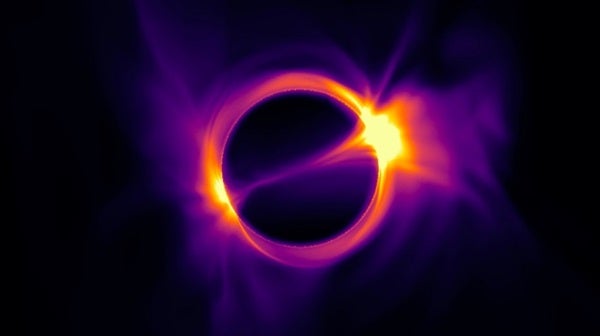Earlier this year, scientists released the first image of the supermassive black hole at the heart of the Milky Way, called Sagittarius A*, or Sgr A* for short. The image doesn’t actually show the black hole, however, but rather its shadow on the glowing material that surrounds it.
Light cannot escape a black hole once it’s been pulled beyond its event horizon, the point of no return and what most people picture when they think of a black hole. But perhaps counter intuitively, some black holes, including Sgr A*, have disks of gas that rapidly orbit around them. This accretion disk is the material the black hole is feeding on. But not even a black hole can gobble down all this food at once. Instead, it must wait for the material to lose momentum through friction. It’s this friction that causes the gas and dust around the black hole to glow, making it possible to spy the otherwise invisible object — and even capture an image of its shadow.
For a long time, however, astronomers struggled to model how the gas around Sgr A* got there.
The researchers compared three different models they developed separately to the observed flickering of Sgr A*. They found that a stellar wind model, in which the gas was blown off from stars near the galactic center, was the best match. While not a surprising conclusion to those that study black hole accretion, it is a promising step in our understanding of the supermassive black hole that beats at the heart of the Milky Way. The results were published in the Astrophysical Journal Letters on June 17.
“Black holes are the gatekeepers of their own secrets,” said Lena Murchikova, William D. Loughlin Member at the Institute for Advanced Study in Princeton, New Jersey, and lead author of the new study, in a press release. “In order to better understand these mysterious objects, we are dependent on direct observation and high-resolution modeling.”










